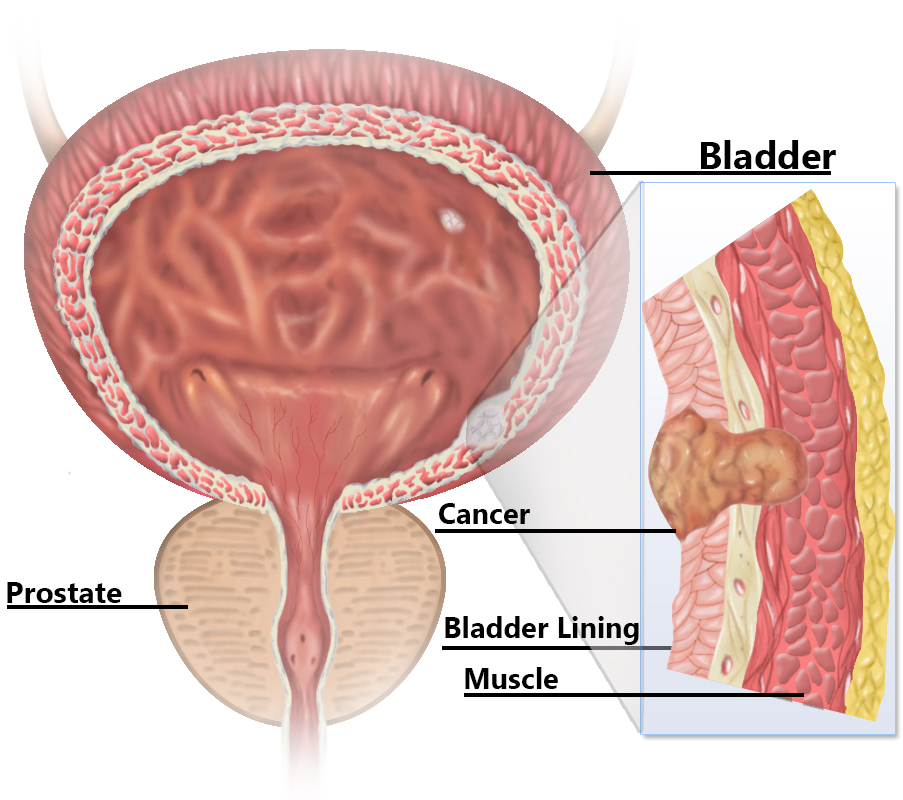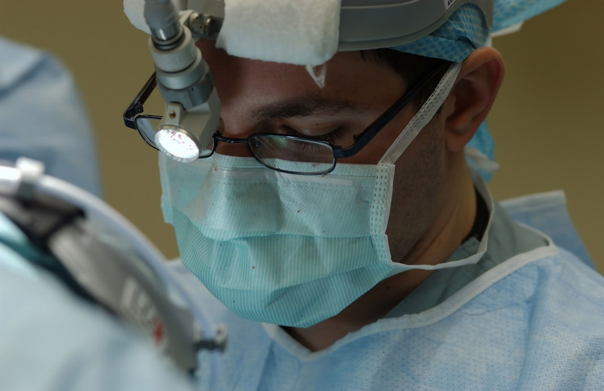The bladder is a hollow organ present in the lower pelvis of the body. The bladder can stretch to store urine and squeeze to allow excretion through the urethra. Kidneys produce urine, and it passes through two veins, ureters, into the bladder. Cancer in the bladder develops when cells start growing abnormally inside the bladder. This can happen to the layers that make up the bladder from either the inside or the outside.

Rare Types of Bladder Cancer
Adenocarcinoma
Adenocarcinoma occurs in the glands’ epithelial, which secrete mucus. It is a very rare form of bladder cancer. Moreover, it is “invasive,” which means it spreads into the layers of the bladder deeply, becoming difficult to treat.
Squamous Cell Carcinoma
Rarely occurring in the US, squamous cell carcinoma occurs mainly due to chronic inflammation and irritation of the bladder. Thus, cancerous cells in the bladder lining develop, and this type of cancer is also invasive. The reason for irritation can be the use of a urinary catheter to treat bladder conditions or draining urine by inserting a catheter through the penis.
Carcinoma of Small Cell
Small cell carcinoma refers to the development of abnormal neuroendocrine cells. These nerve-like cells spread cancer into the bladder and to the other parts of the body through it aggressively.
Sarcoma
Sarcoma occurs due to the development of abnormal and cancerous cells in the bladder muscles. It is, however, very rare in the US.
The Most Common Type of Bladder Cancer
The most common type of bladder cancer is Urothelial Carcinoma or simply Transitional Cell Carcinoma (TCC). It affects the bladder’s inner lining, which contracts and stretches when passing or storing urine. Furthermore, these Urothelial cells are present in the ureters as well as the urethra, which means that tumors can also develop in these parts of the urinary tract as well.
Invasive, Non-Invasive & Superficial
These two terms describe the different types of bladder cancer.
- Invasive
This type of cancer, such as TCC, does not reach deeper layers, but instead, it occurs on the inner layers of the organ.
- Non-Invasive
Non-Invasive cancer, however, occurs in the deeper layers of the bladder and other organs of the body. And, due to its tendency of spreading further, it is difficult to control and treat.
- Superficial
This refers to both the above types of bladder cancer that have not reached the major muscle layers.
Factors Contributing to Risk of Bladder Cancer
- Genetic History of Cancer; if any family member has bladder cancer, it is possible that you might get it too. It is not contagious, but if you had bladder cancer before, you could get it again.
- Smoking; Body processes harmful chemicals and secretes them through urine. These harmful substances can damage the lining of the bladder as that is where it stores urine before excretion.
- Age; aging causes the weakening of the body. Most likely, bladder cancer occurs in men of age over 50.
- Chemical Absorption; certain chemicals such as those in the manufacture of tires, textiles, paints, or even arsenic chemicals can cause bladder cancer.
Symptoms of Bladder Cancer
- Blood in Urine or Semen, sometimes the blood might only be visible through lab test of the urine
- Urination occurs frequently and causes pain
- Pain in the pelvic and lower abdominal area of the body
If you are experiencing any of these symptoms, either at acute or chronic levels, contact Fifth Avenue Urology.

(Source)
Bladder Cancer Urology Treatments
Urologists in the US employ various techniques and medications to treat bladder cancers. Some common treatments for bladder cancer are as below.
For Non-Invasive Bladder Cancer
- Intra-vesical therapy involves the use of a urinary catheter to apply different medical therapies on the bladder. These often include BCG, and it prevents the progression and reoccurrence of tumor in the bladder
- Transurethral Resection applies to patients with large tumors. Surgeons use a cystoscope to cut out the tumor. They also keep a visual of the bladder through a small T.V insertion in the bladder. Despite the resection, the incisions are not visible on the body.
- Cystoscopy: modern cystoscopy allows surgeons to insert microscopic equipment into the bladder. Electrical cautery and laser treatments enable the treatment and cauterization of the tumor in the bladder. In the case of small tumors, there may even be complete removal.
For Invasive Bladder Cancer
- Chemotherapy and Radiation Therapy; radiation therapy allows the destruction of cancerous cells through x-rays. On the other hand, chemotherapy involves injecting a drug that disperses in the whole body and treats cancerous cells.
- Cystectomy; involves the removal of bladder and or prostate in men. In the case of women, portions of the vagina, ovaries, bladder, and uterus require dissection and removal.
Conclusion: Consult With Experienced Urologists For Bladder Problems
Visit the Fifth Avenue Urology website to find out more. Give us a call at 212-675-3186 to schedule an appointment and give us a visit for a personal checkup firsthand at 5 East 83rd Street New York, NY 10028.
FIFTH AVENUE UROLOGY
5 East 83rd Street
New York, NY 10028
212-675-3186
References
- https://www.cdc.gov/cancer/bladder/
- https://www.cancer.net/cancer-types/bladder-cancer/introduction
- https://www.cancer.net/cancer-types/bladder-cancer/types-treatment’
- https://urology.ufl.edu/patient-care/urologic-oncology/urologic-cancers/bladder-cancer/
- https://www.urologyhealth.org/urology-a-z/n/non-muscle-invasive-bladder-cancer
- https://www.mayoclinic.org/diseases-conditions/bladder-cancer/diagnosis-treatment/drc-20356109
- https://www.mayoclinic.org/diseases-conditions/bladder-cancer/symptoms-causes/syc-20356104
- https://www.cancer.org/cancer/bladder-cancer/about/what-is-bladder-cancer.html
